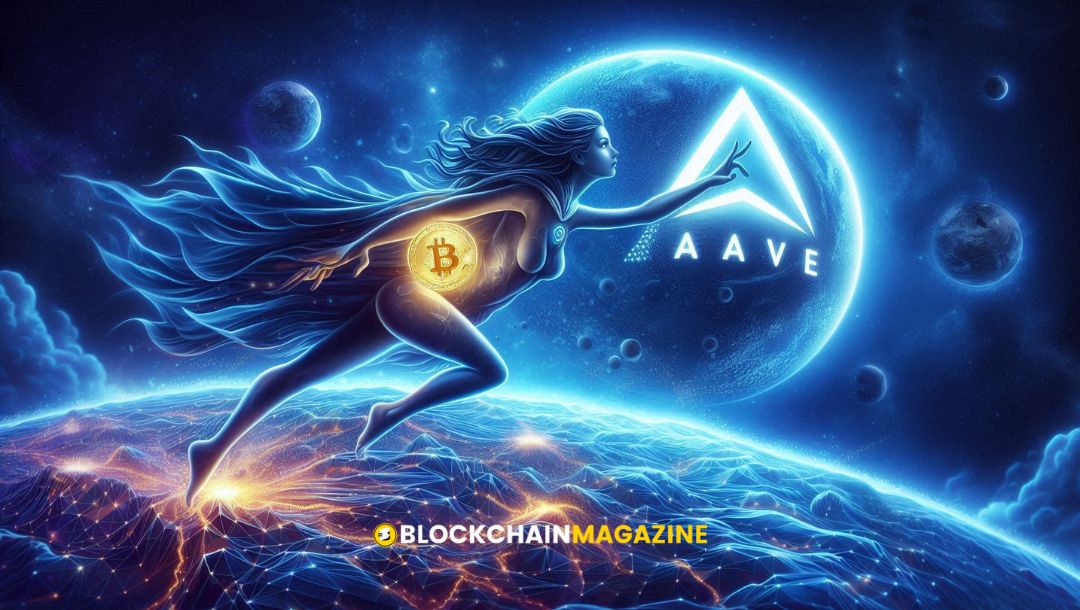Blockchain Transactions and the Future of Money: How They’re Revolutionizing Payments In 2024
As we look ahead to 2024, the future of global payments is set to be revolutionized by blockchain technology. This groundbreaking innovation is transforming the way we send and receive money, making transactions faster, more secure, and cost-effective. The adoption of blockchain-based solutions is expected to continue growing, reshaping the global payment landscape and fostering a more connected and inclusive economy.
Key Takeaways
- Blockchain technology is significantly increasing the efficiency and speed of global transactions.
- The elimination of intermediaries in cross-border payments is reducing costs and settlement times.
- Enhanced security measures provided by blockchain are lowering the risks of fraud in financial transactions.
- The transparency and trust offered by blockchain are revolutionizing consumer payments.
- Future trends indicate substantial growth and technological advancements in blockchain transactions across various sectors.
How Blockchain Transactions Are Transforming Global Payments
The way we exchange money is on the cusp of a significant transformation. Forget the days of clunky cash registers and waiting days for international transfers. Blockchain technology is quickly changing the face of international payments and providing an immediate, safe, and easily accessible future.
The Role of Blockchain in Cross-Border Payments
Eliminating Intermediaries
Traditional cross-border payments are plagued by inefficiencies, including high fees, long processing times, and multiple intermediaries. Blockchain-based payment networks offer faster and more cost-effective solutions for cross-border transactions, leveraging cryptocurrencies or stablecoins for near-instantaneous transfers. By bypassing traditional banking systems and settlement processes, blockchain enables quicker and cheaper cross-border payments, benefiting individuals, businesses, and economies.
Real-Time Settlements
In contrast to conventional payment systems that depend on large institutions like banks, blockchain payments function autonomously, removing the need for intermediaries. Transactions are instead verified and recorded on a transparent ledger accessible to all network participants. This improves security and reduces dependence on external entities and their associated fees.
Lowering Fraud Risks
Blockchain technology significantly lowers the risk of fraud in cross-border payments. The transparent and immutable nature of blockchain ledgers ensures that all transactions are recorded and cannot be altered. This transparency makes it easier to detect and prevent fraudulent activities, providing an added layer of security for international transactions.
Blockchain’s high speed, low fees, and 24-hour availability could help make cross-border payments as easy as sending a Venmo payment.
Blockchain Technology and Consumer Payments
Transparency and Trust
Blockchain technology is set to revolutionize consumer payments in 2024 by offering unparalleled transparency and security. Its decentralized nature provides an impenetrable barrier against fraudulent activities, with each transaction meticulously recorded on a public ledger. This level of transparency surpasses traditional payment methods, instilling confidence in users and businesses alike.
Decentralized Payment Systems
Blockchain-based decentralized payment networks eliminate intermediaries, facilitating direct transactions that promise enhanced security through cryptographic protocols and a consensus mechanism inherently resistant to fraud. This technology underpins the operations of cryptocurrencies, ensuring transactions are immutable and verifiable, which is crucial for accountability and auditing purposes.
Impact on Everyday Transactions
Accepting digital payments through blockchain can increase efficiency and transaction speed, without compromising on the security enjoyed with traditional card transactions. Blockchain technology is poised to revolutionize consumer payments in 2024, offering unparalleled transparency and security. Its decentralized nature provides an impenetrable barrier against fraudulent activities, with each transaction meticulously recorded on a public ledger. This level of transparency surpasses traditional payment methods, instilling confidence in users and businesses alike.
Future Trends in Blockchain Transactions for 2024
As we look ahead to 2024, the landscape of blockchain transactions is poised for remarkable growth and transformation. Expert predictions for market growth in 2024 suggest a significant rise in the adoption of blockchain technology across various sectors. This surge is expected to enhance efficiency, reduce costs, and bolster security in financial transactions.
Predicted Market Growth
The global market for real-time payments is projected to soar from $19.8 billion in 2022 to $88.7 billion by 2027, reflecting a compound annual growth rate (CAGR) of 35.0%. This growth underscores the increasing reliance on blockchain solutions to facilitate faster and more secure transactions.
Adoption in Various Sectors
Blockchain technology is not limited to the financial sector. Its adoption is spreading to industries such as healthcare, supply chain management, and real estate. These sectors are leveraging blockchain to improve transparency, traceability, and efficiency in their operations.
Technological Advancements
The continuous evolution of blockchain technology is paving the way for innovative solutions. Advances in smart contracts, decentralized finance (DeFi), and interoperability between different blockchain networks are set to revolutionize the way transactions are conducted. These technological strides will further solidify blockchain’s role in the future of global payments.
The way we exchange money is on the cusp of a significant transformation. Blockchain technology is quickly changing the face of international payments, providing an immediate, safe, and easily accessible future.
Implications of Blockchain Transactions for Businesses
Streamlining Operations
Blockchain technology offers businesses the ability to streamline their operations by creating an immutable record of transactions. This transparency mitigates the risk of fraud and enhances trust among all parties involved. Smart contracts can automatically execute payment and shipment terms, providing real-time updates and reducing administrative overhead.
Cost Savings
By eliminating intermediaries, blockchain significantly reduces transaction costs, especially for cross-border payments. This streamlined approach enhances efficiency and affordability, making it easier for businesses to expand into new markets. The reduction in payment fraud also contributes to overall cost savings.
Improving Customer Experience
Blockchain’s transparency and security features can greatly improve the customer experience. With quicker, safer, and more affordable payment solutions, businesses can build stronger relationships with their customers. The technology also enables real-time updates and greater trust, which are crucial for customer satisfaction.
The Evolution of Decentralized Finance (DeFi)
Rise of Cryptocurrencies
Decentralized Finance (DeFi) platforms are expanding to include cross-border payment solutions, enabling users to send and receive funds globally without relying on traditional banks. These platforms offer financial services like lending, borrowing, and trading, all powered by blockchain technology. Stablecoins emerge as a notable trend within this landscape, prized for their potential to increase liquidity, reduce costs, and imbue stability.
Integration with Traditional Finance
The fusion of blockchain and fintech has unleashed a wave of innovation, driving unprecedented levels of efficiency, security, and accessibility in financial services. From decentralized finance (DeFi) and tokenization to cross-border payments and regulatory compliance, blockchain is at the forefront of transformative change in the financial industry.
Future Prospects
The trajectory of blockchain technology in disrupting traditional payment systems is unmistakable. With the advent of cryptocurrencies like Bitcoin, Litecoin, and Ripple and emerging projects like Alchemy Pay, Hedera Hashgraph, and ABBC Coin, the foundation for decentralized payment networks is stronger than ever. These technologies not only promise to streamline transactions but also introduce a level of transparency, security, and efficiency previously unattainable.
Security and Privacy in Blockchain Transactions
Cryptographic Techniques
Blockchain employs advanced cryptographic techniques to secure transactions, making them highly resistant to unauthorized alterations or hacking. This upgraded security is particularly valuable for large-value cross-border transactions. By integrating advanced cryptographic techniques and smart contracts, blockchain ensures enhanced security and user control.
Public vs. Private Blockchains
While public blockchains provide transparency by making transaction data accessible, this transparency also allows observers to link blockchain addresses to real-world identities through transaction analysis. Privacy concerns arise from the visibility of transaction patterns and financial activities on these transparent networks. To address these issues, privacy-enhancing technologies, such as zero-knowledge proofs and confidential transactions, are being explored to balance transparency and privacy while maintaining the integrity of blockchain networks.
User Anonymity and Data Protection
Blockchain offers enhanced privacy and control over personal financial data. Unlike traditional payment systems which require users to disclose sensitive information, blockchain transactions can be conducted with pseudonyms, protecting the privacy of individuals. However, concerns exist around the potential deanonymization of users and the privacy implications of publicly accessible transaction data. Regulatory bodies may require mechanisms to prevent illegal activities, raising concerns about user privacy and data protection.
The future of blockchain privacy in 2024 lies in revolutionizing blockchain privacy in 2024 with programmable protocols for selective data disclosure.
In the ever-evolving world of blockchain, ensuring the security and privacy of transactions is paramount. Our latest insights delve into the mechanisms that protect your digital assets and personal information. Stay informed and secure your investments by visiting our website for comprehensive guides and expert analysis.
Conclusion
As we move further into 2024, the transformative power of blockchain technology in the realm of global payments becomes increasingly evident. The ability to conduct fast, secure, and cost-effective transactions is revolutionizing the way we think about money and payments. Traditional barriers such as high fees, lengthy settlement times, and the risk of fraud are being dismantled, paving the way for a more inclusive and efficient global economy. With continuous advancements and growing adoption, blockchain is not just a technological innovation but a fundamental shift towards a more connected and transparent financial future. The future of money is here, and it is being shaped by the unparalleled capabilities of blockchain technology.
Frequently Asked Questions
How is blockchain shaping the future of global payments in 2024?
Blockchain technology is revolutionizing global payments by providing immediate, safe, and easily accessible transactions. It increases efficiency, reduces costs, and enhances security, making it a game-changer in the world of finance.
What are the benefits of blockchain transactions for cross-border payments?
Blockchain transactions eliminate intermediaries, enable real-time settlements, and lower fraud risks in cross-border payments. This results in faster, more secure, and cost-effective international transactions.
How does blockchain improve security in financial transactions?
Blockchain employs robust cryptographic techniques to secure transactions. Each transaction is meticulously recorded on a public ledger, ensuring transparency and reducing the risk of fraud.
What impact will blockchain have on everyday consumer payments?
Blockchain technology will offer unparalleled transparency and security in consumer payments. Its decentralized nature provides a barrier against fraudulent activities, instilling confidence in users and businesses alike.
What are the future trends in blockchain transactions for 2024?
Future trends include significant market growth, increased adoption in various sectors, and technological advancements. The global market for real-time payments is expected to rise substantially, driven by blockchain technology.
How can businesses benefit from blockchain transactions?
Businesses can streamline operations, achieve cost savings, and improve customer experience through blockchain transactions. The technology enhances efficiency and security, making it a valuable asset for modern enterprises.
Stay informed with daily updates from Blockchain Magazine on Google News. Click here to follow us and mark as favorite: [Blockchain Magazine on Google News].
Get Blockchain Insights In Inbox
Stay ahead of the curve with expert analysis and market updates.
latest from tech
Disclaimer: Any post shared by a third-party agency are sponsored and Blockchain Magazine has no views on any such posts. The views and opinions expressed in this post are those of the clients and do not necessarily reflect the official policy or position of Blockchain Magazine. The information provided in this post is for informational purposes only and should not be considered as financial, investment, or professional advice. Blockchain Magazine does not endorse or promote any specific products, services, or companies mentioned in this posts. Readers are encouraged to conduct their own research and consult with a qualified professional before making any financial decisions. The featured image used is just a creative depiction of the title and it does not intend to hurt sentiments of any person or institution. If it hurts anyone sentiments, please do not hesitate to reach out to Blockchain Magazine.

 Bitcoin
Bitcoin  Ethereum
Ethereum  XRP
XRP  Tether
Tether  Solana
Solana  USDC
USDC  Dogecoin
Dogecoin  Cardano
Cardano  Lido Staked Ether
Lido Staked Ether  TRON
TRON  Wrapped Bitcoin
Wrapped Bitcoin  Chainlink
Chainlink  Wrapped stETH
Wrapped stETH  Avalanche
Avalanche  Sui
Sui  Stellar
Stellar  Litecoin
Litecoin  Toncoin
Toncoin  Shiba Inu
Shiba Inu  Hedera
Hedera  LEO Token
LEO Token  USDS
USDS  Hyperliquid
Hyperliquid  Polkadot
Polkadot  WETH
WETH  MANTRA
MANTRA  Bitcoin Cash
Bitcoin Cash  Bitget Token
Bitget Token  Ethena USDe
Ethena USDe  Wrapped eETH
Wrapped eETH  Uniswap
Uniswap  Monero
Monero  NEAR Protocol
NEAR Protocol  Pepe
Pepe  WhiteBIT Coin
WhiteBIT Coin  Ondo
Ondo  Aave
Aave  Bittensor
Bittensor  Aptos
Aptos  Dai
Dai  Internet Computer
Internet Computer  Official Trump
Official Trump  Mantle
Mantle  Ethereum Classic
Ethereum Classic  OKB
OKB  Tokenize Xchange
Tokenize Xchange  Gate
Gate  sUSDS
sUSDS  Coinbase Wrapped BTC
Coinbase Wrapped BTC 



